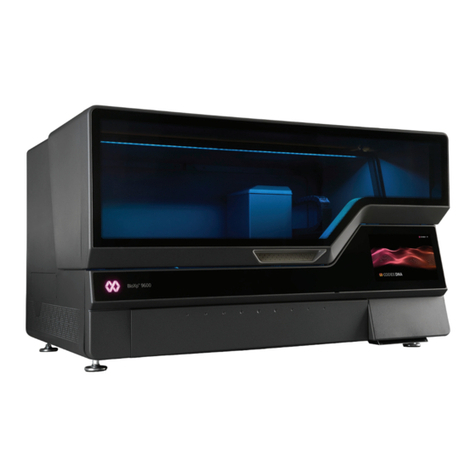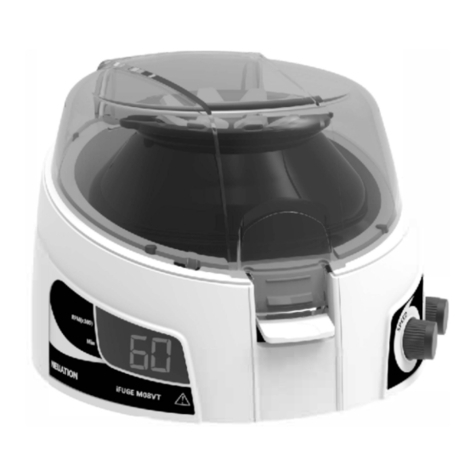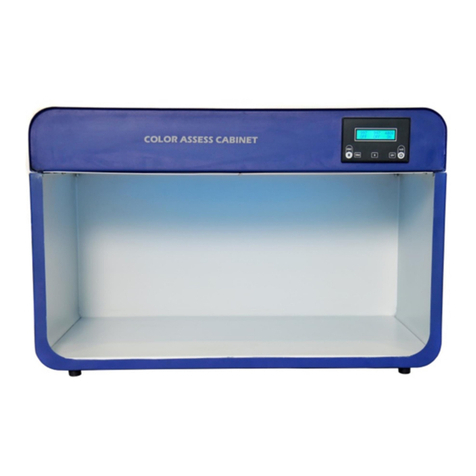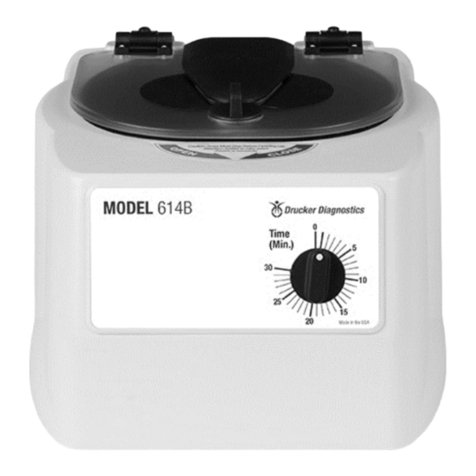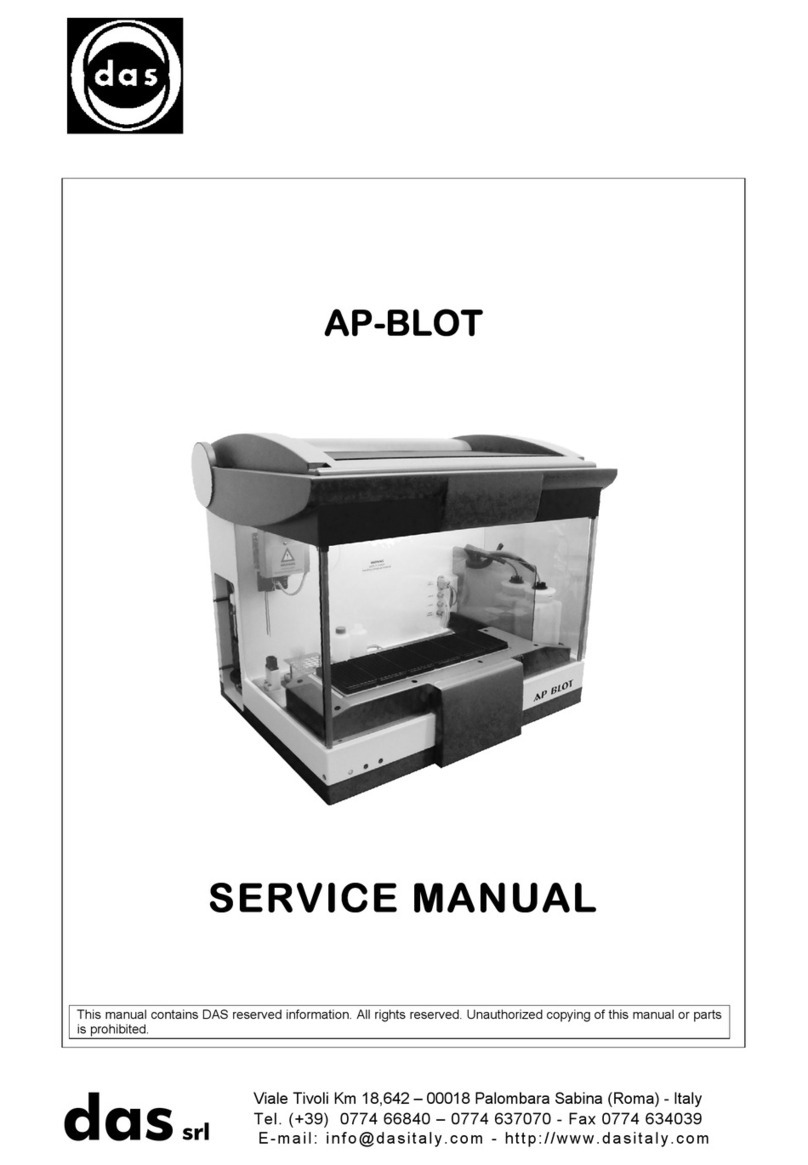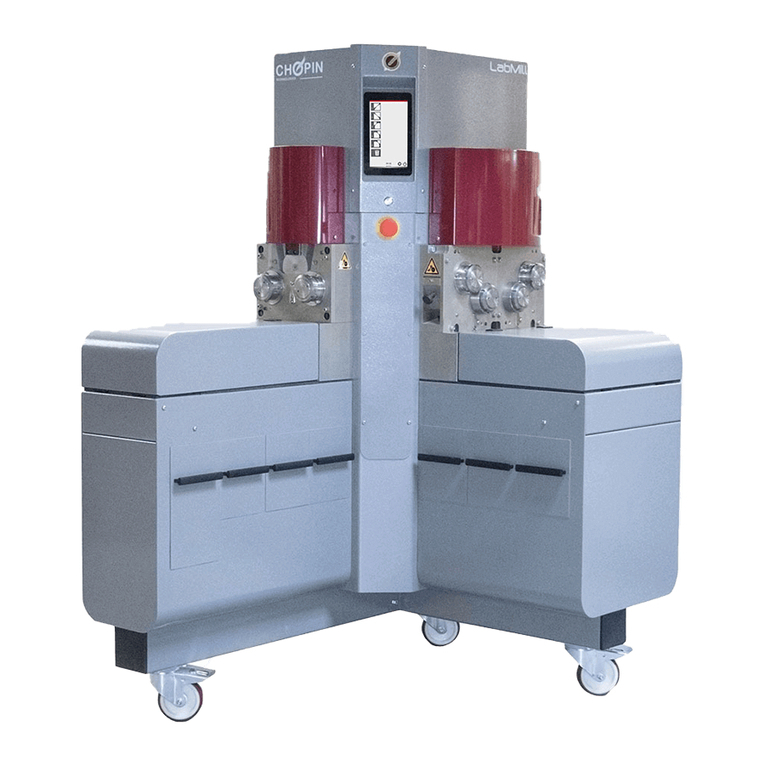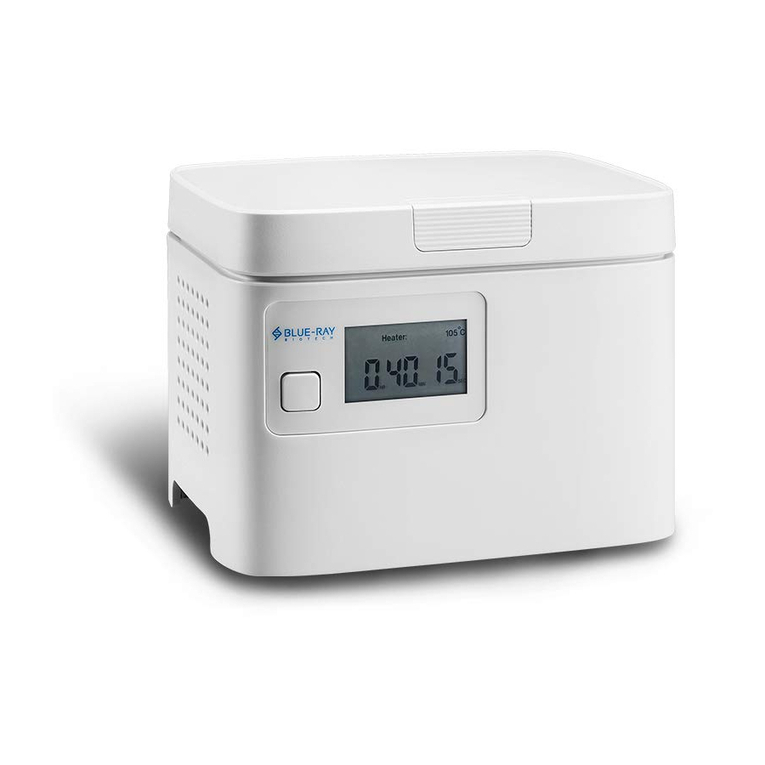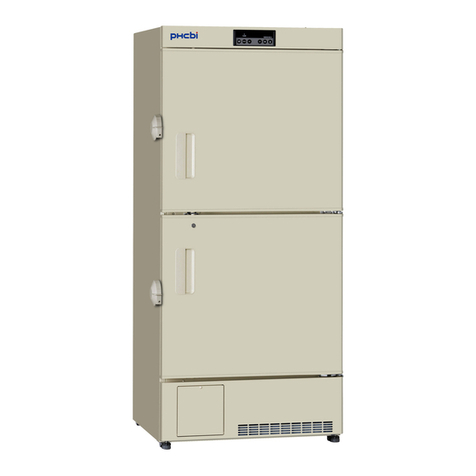Bedfont NOxBOX mobile User manual

NOxBOX®mobile
breath analysis is the new blood test
www.bedfont.com
NOxBOX®mobile with NOxBOX®+or NOxBOX®O2


www.bedfont.com
2
NOxBOX® mobile Operating Manual
English
Contents
1 Introduction 3
Intended Use 3
2Environment 3
3Safety 3
Basic Safety Recommendations 3
4Warnings 4
Contraindications 4
5System Contents 5
6Instrument Layout 5
7General Description 6
8Manual Handling 7
9Maintenance 8
10 Commissioning 8
11 Installing a Gas Cylinder 9
12 Cylinder Changeover 10
13 Initial Purge 11
14 Connecting to a Patient Circuit 12-13
15 Decommissioning 14
16 Dose Calculation 15
17 Manual Bagging 16
18 Calibration 17
19 Spares 18
20 Specification 18
21 Warranty 19
22 Troubleshooting 20-21

www.bedfont.com
3
NOxBOX®mobile Operating Manual
English
Introduction
Nitric oxide (NO) is administered as a selective
pulmonary vasodilator for conditions such as:
●Persistent pulmonary hypertension in new-
born babies (blue baby syndrome)
●Adult respiratory distress syndrome
●Acute post-operative cardiac patients
Intended use
The NOxBOXmobile is intended for use by
healthcare professionals in a medical environment
to administer nitric oxide (NO) to the breathing
circuits of patients undergoing inhaled NO (INO)
therapy.
The NOxBOXmobile has been designed to provide
adjustable continuous ow NO delivery to the
patient ventilator circuit to achieve the required
dose of NO to the patient.
The NOxBOXmobile must be used in conjunction
with a suitable Inhaled Nitric Oxide (INO) Therapy
monitor to conrm the correct dose of NO is
being delivered to the patient. Specically, the
NOxBOX+ and NOxBOXO2monitors from the
Bedfont Scientic range of products are suitable
for use with the NOxBOX mobile. Refer to the
monitor Instructions for Use for correct operation,
maintenance and safety instructions.
Environment
The NOxBOX®O2complies with the directive
EN60601-1-2 electromagnetic compatibility
but can be affected by cellular phones and by
electromagnetic interference exceeding the levels
specied in EN50082:1
Safety
Do not operate this equipment until you have read
and understood the operating, maintenance and
safety instructions included in this manual and any
manuals supplied with the INO Therapy monitor
being used.
Only trained and responsible personnel should
work with or around this equipment.
To avoid serious injury, pay attention to all
precautionary labels attached to equipment,
cylinders, containers and boxes prior to start-up.
Do not remove or obscure any label. If a label
is missing, becomes worn, or is difcult to read,
replace it with a new one. Product labels for the
NOxBOXmobile are available from your Distributor
or Bedfont Scientic representative.
Basic Safety
Recommendations
Prevent formation of unsafe atmospheres -
Ensure that properly engineered ventilation and
atmospheric monitoring systems are installed and
operating properly. Creating a conned space
presents the potential for unsafe atmospheres. If
dangerous levels of a gas are detected, evacuate
the affected area immediately. Do not re-enter the
area until safe conditions are restored.
Prevent injury - Ensure that all tools and
instruments used are in good condition. Be aware
that high-velocity gas may be released at vents and
safety relief valves.
Maintain safety devices - Check all safety devices
at least annually or as otherwise required by local
codes or manufacturer recommendations. Properly
maintain safety valves. Never bypass safety
devices, and never operate the equipment outside
its specied limits.
Ensure safe maintenance and repair - Only
qualied personnel should repair the equipment.
Ensure equipment is maintained according to the
manufacturer’s recommendations, including any
calibration or inspection routines.

www.bedfont.com
4
NOxBOX® mobile Operating Manual
English
Warnings
DANGER: Mishandling of pressurized process
equipment or gas cylinders can result in death,
serious injury, or property damage. Handle
pressurized equipment and cylinders with
extreme care and in accordance with the
manufacturer’s instructions.
DANGER: Both high-pressure connection
hoses should be correctly attached to the
NOxBOXmobile system at all times whilst the
system is pressurized.
DANGER: Poisonous gases can be fatal if
inhaled, even in very small quantities. Provide
adequate ventilation and appropriate personal
protective equipment (PPE).
This equipment contains poisonous gases.
The Threshold Limit Value (TLV) for each gas
refers, in general, to airborne concentrations
at or below which nearly all workers may be
repeatedly exposed without adverse effects.
The TLVs for the specialty gases used with this
equipment should be stated on the cylinder
body labels and the MSDSs (Material Safety
Data Sheets) for each gas.
Nitric Oxide (NO):
At room temperature and atmospheric pressure,
NO is a colourless, odourless, toxic, non-
ammable gas. It will readily combine with
atmospheric oxygen to form NO2.
Nitrogen Dioxide (NO2):
NO reacts with atmospheric oxygen to produce
NO2; the NO2may react further with water to
produce nitric and nitrous acid which can both
be extremely corrosive. The human lungs
are a wet environment, so inhalation of this
extremely toxic gas can have severe effects and
every reasonable measure should be made to
minimise exposure to NO2.
Current UK HSE guidelines recommend
following the Chemical Hazard Awareness
Notice (CHAN) for nitrogen oxides (including
NO and NO2) state that time weighted average
(TWA) over eight hours should not exceed
1ppm.
Nitrogen (N2):
Nitrogen gas is an asphyxiant. A major
component of air, it is colourless and odourless
at room temperature. Care should be taken to
avoid excessive release of Nitrogen into the
atmosphere without adequate ventilation to
protect the user from a low-oxygen atmosphere
being created.
Contraindications
●Refer to your NO drug manufacturer’s
instructions for use, safety and warning
statements regarding contraindications for
the application of nitric oxide gas for the
purpose of INO therapy.
●NO gas is toxic at high concentrations and
appropriate continuous monitoring of the
applied patient dose concentration should
be used.
●WARNING: Sudden cessation of INO
therapy can cause complications such as
rebound hypoxia to occur.

www.bedfont.com
5
NOxBOX®mobile Operating Manual
English
NOxBOX+monitoring instrument
1. NOxBOX+
2. Mains power adapter
3. Magnum screwdriver
4. Calibration screwdriver
5. Sample line
6. Water trap
7. Naon tubing
8. Calibration T-piece adapter
9. Operating manual
10.PU tube from the naon to the inlet
NOxBOXmobile delivery system
A. Gas cylinder pressure gauges
B. Changeover unit
C. NOxAIR NO2environmental sensor
D. Single stage regulator
E. Outlet pressure gauge
F. Trolley
G. Low ow indicator
H. High ow indicator
I. NOxAIR NO environmental sensor
J. Spanner attached by chain
System Contents
E
F
G H
I
J
A
B
C
D
A
NOxBOXO2monitoring instrument
1. NOxBOXO2
2. Water trap
Also supplied with:
Mains power adapter
Calibration screwdriver
Bacterial lter
Sample line
Water trap drainage accessory
Calibration Y-piece adapter
Operating manual
1
2
Figure 1
Instrument Layout

www.bedfont.com
6
NOxBOX® mobile Operating Manual
English
General Description
The NOxBOXmobile is used to control the
pressure and ow of NO gas into a patient
breathing circuit. The ow of NO gas is
controlled by the user via the adjustable
ow meter (See Fig.1, item G). When used
in conjunction with a NOxBOXO2 monitor, a
complete delivery and monitoring system is
formed that allows the user to set the patient
dose level and continuously monitor the dose
gas at patient side.
The NOxBOXmobile system is mounted to an
epoxy coated, mild steel trolley designed to be
situated close to the patient’s bedside ventilator.
The NOxBOXmobile system provides capacity
for two NO supply cylinders, up to 20L water
capacity, which when combined with the auto-
changeover system ensures uninterrupted
delivery of NO is possible. When used correctly,
this helps guard against sudden unexpected
withdrawal from INO therapy.
The system is tted with stainless steel high-
pressure hoses that attach to the cylinders
via suitable cylinder connectors (specic to
individual region). These hoses are tted with
a safety-cord to restrain the hose in the event
of a catastrophic pressure burst. Further safety
control measures are provided by a pressure
relief valve tted after the rst stage regulator,
with a second pressure relief valve tted after
the second stage regulator.
INO Therapy Monitor
The system trolley is provided with a shelf that
allows a NOxBOXO2 monitor to be xed to the
system, providing the monitoring capability.
Refer to the NOxBOXO2manuals for safe use
and maintenance.
Environmental Alarms
Optional NOxAIR environmental gas detectors
can be provided to warn personnel of any
leaks in the NO supply. These portable alarms
continuously monitor the atmosphere for NO
or NO2 levels (depending on model), capable
of measuring down to 0.1ppm. Each monitor
has a set of alarms that can be set to ensure
best-practice environmental monitoring. These
alarms can be worn by an individual, positioned
in the vicinity of the patient or left on the hooks
provided on the NOxBOXmobile. Refer to the
NOxAIR environmental gas detector manuals
for safe use and maintenance.
Note: The NOxAIR alarms are personal alarms,
designed to alert staff in the immediate vicinity
of the alarm. They are not designed to be heard
from a long distance or from a different room.
NO Gas Cylinders
The NOxBOXmobile system is designed for
use with a medical-grade gas mixture of NO
balanced in Nitrogen (N2). The maximum
recommended concentration for use is
1000ppm NO. Bedfont Scientic do not provide
therapeutic gas mixtures for INO therapy.
Refer to the manufacturer’s labels regarding the
concentration and precise mixture of the NO/
N2gas.
Please refer to the manufacturer’s instructions
on safe handling of the gas, gas cylinder and
any additional gas handling equipment provided.
All safety notices and warning should be read
and understood prior to use.
Warning: N2 gas is an asphyxiant, and care
should be taken to understand that adding
large quantities of N2to the patient circuit may
cause dilution of the oxygen content of the
patient gases. It is recommended at all times
during INO therapy to use a monitor such as the
NOxBOXO2that provides oxygen monitoring
capability to maintain awareness of this
phenomenon possibly occurring.

www.bedfont.com
7
NOxBOX®mobile Operating Manual
English
Manual Handling
The NOxBOXmobile system is handling a toxic
gas at high pressures. Care should be taken
when moving the trolley to ensure that it is
protected from excessive percussive knocks.
Before moving, ensure system brakes are
disengaged. Always use the metal frame of the
trolley to manoeuvre the system, ensuring a
secure grip to prevent unexpected movement.
Never attempt to move the equipment by pulling
on the system connection lines or gas cylinders.
When in use and attached to the patient, the
NOxBOXmobile should be placed to avoid any
tension within the connection lines to the patient
circuit. The system brakes should be applied to
prevent accidental movement of the equipment,
which could cause lines to disconnect from
the patient circuit or damage to any monitor
connections.
Gas cylinders can be heavy. Appropriate manual
handling techniques should be observed when
lifting cylinders on and off the system trolley.
Always engage system trolley brakes to stabilise
the platform prior to attempting to replace any
gas cylinders. Gas cylinders should be properly
restrained when on the trolley, using the
provided straps.

www.bedfont.com
8
NOxBOX® mobile Operating Manual
English
Maintenance
User
Single-patient use items such as the NOxKIT
must be disposed of after every treatment. No
processing instructions are available for these
items. Follow local procedures for safe disposal
of such items.
Qualied Technician
Maintenance procedures should only be
undertaken by technicians that have received
the appropriate technical and maintenance
training from Bedfont Scientic Ltd for the
relevant equipment.
Correct and safe operation of the
NOxBOXmobile system should be checked
regularly. Bedfont recommend inspecting the
system on a monthly schedule for obvious signs
of wear and tear.
Flow and pressure regulation checks should
be performed in accordance with the expected
operating parameters. Perform a leak decay
test to ensure there are no leaks within the
system. Details of these tests will be provided
by Bedfont on request.
Replace any missing, worn or damaged
components in accordance with the
NOxBOXmobile maintenance manual.
Cleaning
All new equipment, as well as used equipment
that may have become contaminated during
service, must be thoroughly cleaned.
Perform cleaning in accordance with applicable
cleaning standards to ensure that the equipment
has been safely prepared for the application
for which it is to be used. Carefully inspect all
cleaned parts. If any evidence of contamination
is noted, clean the part again.
●Do not immerse the system in cleaning
uids.
●Do not use abrasive cleaning materials
on the system, as this may damage the
protective nish or affect the legibility of
control panel items.
NOTE: If using with a NOxBOXO2or NOxBOX+
monitor, ensure the guidelines for cleaning
these monitors are followed separately. These
monitors can be easily damaged by using
cleaning materials containing alcohol or VOCs.
Avoid immersing electronic equipment.
Commissioning
NOxBOXmobile
The NOxBOXmobile is supplied as an
assembled system.
Carefully remove the trolley from the packaging
case and pallet. NOTE: the trolley system
is heavy and requires at least two people to
handle during lifting operations.
The system has a high-pressure gas-handling
system. This should only be set-up and used
by experienced individuals that have had the
appropriate training in safe set-up and handling
of the NOxBOXmobile system. Contact Bedfont
or your distributor for full details.
Monitor System
If supplied, remove the NOxBOXO2monitor
from its packaging and position on the provided
shelf on the NOxBOXmobile trolley. The system
should lock into place at the back, using the key
provided with the system.
Refer to the NOxBOXO2operating manual for
instructions on safe use and maintenance.
NOxAIR alarms
If supplied, remove the monitor alarms from
their packaging and position on the hooks
provided on the NOxBOXmobile trolley.
Refer to the NOxAIR alarm operating manuals
for instructions on safe use and maintenance.

www.bedfont.com
9
NOxBOX®mobile Operating Manual
English
Installing a gas cylinder
Apply the brakes to the wheels before installing the gas cylinders. The gas cylinder needs to be placed
carefully onto the trolley as the cylinders can weigh more than 15kg.
Place the cylinder behind the lip on the base place to ensure that it is correctly positioned.
It is essential to restrain the cylinder using the polyester webbing straps provided to prevent it from
accidentally falling.
The black buckles should ‘click’ closed and be adjusted to ensure that the cylinders are held securely.
Before connecting the cylinder to the system, make sure that the regulator tap has been switched off
to prevent gas from escaping. This depends on the type of cylinder in use:
● If using BS14, provided by BOC, twist the adapter nut onto the cylinder thread and tighten it using
the spanner provided. Ensure that the PTFE washer is in place in the gas cylinder connector (see
‘B’, page 3).
● If using INOMax, provided by INO Therapeutics, screw the connector on and tighten by hand only.
● If using Kinox, provided by Air Liquide, screw the connector tted with an O-ring (rotating black
plastic connector) onto the bottle top and tighten by hand only. If the tting does not have an O-ring,
a spanner must be used to tighten it.
● If another manufacturer’s gas is used, seek advice from the supplier or contact Bedfont.
Figure 2-a: Connection
Including NOxBOX Mobile
Installing a Gas Cylinder
Before installing the gas cylinder, ensure the
NOxBOXmobile trolley is placed on a rm level
surface, positioned such that easy access to
the cylinder mounting platform is available, and
engage the trolley brakes before manoeuvring
cylinders on or off the trolley.
For safe cylinder handling refer to “Manual
Handling” notes (page 7).
Place the cylinder onto the trolley platform,
seating it against the upright supports provided.
Cylinder must sit inside the raised rim of the
trolley base. Restrain the cylinder with the
provided nylon webbing straps correctly tted to
prevent the cylinder from toppling in use. Place
the strap around the cylinder and pull the free-
end until the strap lies tight around the cylinder,
the metal buckle will automatically grip onto the
strap and hold in place.
WARNING: gas cylinders can be very
dangerous if they topple over. All safety
measures must be in place to ensure the
cylinders are properly secured when on the
trolley platform.
Prior to connecting the cylinder:
●Ensure the gas control valve is shut (this
should be the default position for the valve).
Any leaking unregulated gas should be very
obvious.
●Remove any safety caps from the threaded
valve connection on the cylinder.
Cylinder connections vary depending on
territory. Refer to your local distributor for details
on your connection type.
Figure 2: BS14 connector with PTFE sealing
washer
●Visually inspect the connector on the hose
for any wear or damage
● If there should be a sealing element, ensure
it is present and free from apparent wear or
damage. If it is damaged it must be replaced
prior to use. (see Figure 2, illustrating a
BS14 style connector with PTFE washer
seal)
●Introduce the connector to the cylinder valve
and carefully hand-tighten the nut. Do not
force the nut if it sticks, reverse the nut and
ensure the nut is not cross-threading and
that the thread is free from damage before
attempting to reconnect.
● Once hand-tight, use the supplied
adjustable spanner to tighten the connection
to the cylinder until it feels rmly tight.
Over-tightening the connection can cause
damage.
●Refer to the gas manufacturer’s instructions
for specialist connections. Do not use any
inappropriate tools on hand-tighten only
type connections.
Repeat the above steps to attach the second
cylinder.

www.bedfont.com
10
NOxBOX® mobile Operating Manual
English
Cylinder Changeover
The NOxBOXmobile has a continuous NO
supply feature consisting of a two-cylinder
supply attached to an automatic change-over
unit (See Fig. 3)
The automatic change-over unit has a control
knob with an arrow (as shown).
When both supply cylinders are connected and
available, the unit will use the cylinder the arrow
is pointing at to supply to the patient (see Fig. 3,
supply is from Cylinder 2 in this example).
When the primary supply cylinder reaches
approximately 10 bar, the auto-changeover
unit will switch to using the secondary supply
cylinder, this automatic switch is controlled by
the available pressure and is independent of
where the control arrow is pointing.
Once the system has switched over the supply
cylinders, it is good practice to replace the
empty cylinder for a full cylinder to ensure back-
up gas supply is available to the unit.
To safely change an empty supply cylinder:
1. Ensure the system brakes are on and that
you have full and easy access to the gas
cylinder to be changed. Be aware of any
connections in place to other systems (e.g.
patient circuit) before moving the system to
avoid stretching lines.
2. Turn the auto-changeover control so that
the arrow is pointing at the new (full) supply
cylinder (i.e. away from the cylinder about
to be replaced, see Fig. 4, where cylinder
2 is being changed). This step is best
practice, if the control remains pointing
at the empty cylinder, when the supply is
replenished the system will switch back to
this cylinder, rather than continuing to use
the secondary cylinder.
3. Fully close the control valve on the empty
cylinder.
4. Using the spanner provided, very carefully
release the connection nut at the cylinder
valve. There will be a short sharp release
of gas at high pressure. Continue to
release the nut. NOTE: if there is sustained
gas release, then the cylinder control valve
is not fully closed. This MUST be closed
before removing the nut.
5. Once the nut is sufciently loosened, use
your hands to undo the nut and remove the
gas line connector from the empty cylinder.
6. Loosen the straps from the empty cylinder
and remove from the trolley. Be aware,
an empty cylinder can be very heavy; see
“Manual Handling” (Page 7).
7. Install the new gas cylinder by following the
steps detailed in “Installing a Gas Cylinder”
(Page 9).
Figure 3 Figure 4

www.bedfont.com
11
NOxBOX®mobile Operating Manual
English
Initial Purge
IMPORTANT: Residual NO gas left in the
system may convert to NO2during storage. This
purge procedure MUST be followed prior to use
on a patient to ensure that any residual gas from
previous use has been ushed out.
SAFETY: Refer to all safety notices regarding
handling the gas and using suitable ventilation
to prevent build-up of unsafe atmospheres.
During purge, the exhaust from the unit should
be fed through an appropriate atmospheric
scrubber or a scrubber lter for NOx gases.
This will safely remove the toxic nitrogen oxides
from the gas exhaust. Contact Bedfont or your
distributor for NOx scrubber information.
NOTICE: If system is left pressurised following
purge for more than 4 hours without use, this
purge procedure must be repeated to ensure
safe application.
● Ensure the Changeover Dial (See Fig.5,
item B) arrow is pointing to cylinder 1. Turn
on cylinder 1 by opening the cylinder valve
carefully.
●The Pressure 1 gauge dial should register
the contents pressure of the cylinder (See
Fig. 5, item A). Ensure there is sufcient
pressure in the cylinder to commence
treatment. A full cylinder is approximately
150 - 200 bar (check with your supplier). A
cylinder is “empty” at 10 bar.
● The outlet pressure gauge dial (Fig. 5, item
E) should read 2 bar.
● Open the valve on the ow meter (Fig. 5,
item G) until the ow reads approximately
600 cc/min. IMPORTANT: do not open valve
beyond maximum ow indicated on the ow
meter (Fig. 3, item H) as this may damage
the instrument control.
●Allow the system to purge for 10 minutes
before switching off cylinder 1 at the cylinder
valve. Do not over-tighten the cylinder valve
when closing.
●Repeat this purge procedure for cylinder 2.
●Close the valve on cylinder 2 and carefully
close-off the ow meter. NOTE: when fully
closing the valve, be careful to not over-
tighten as this may cause damage to the
control valve mechanism.
●Ensure both cylinder valves are shut off
by end of the purge procedure and prior to
connecting to patient.
Figure 5

www.bedfont.com
12
NOxBOX® mobile Operating Manual
English
Connect To Patient
1. Position the NOxBOXmobile as close as
practical to the patient ventilator to enable
ease of connection. Engage the system
brakes and make sure the system is stable
before connecting to the patient.
2. Connect a fresh dose line from a new
NOxKIT to the outlet of the NOxBOXmobile
ow meter, pushing the soft bung rmly
over the metal barb. Attach the luer lock on
the free-end to an appropriately sized vent
connection adaptor from the NOxKIT; the
size should match the circuit size in use on
the patient circuit.
3. Insert the dose line adaptor into the patient
ventilator circuit inspiratory limb. The dose
line should be connected approximately
1m (between 0.7m and 1.3m) back from
the patient sample point being taken by the
NOxBOXO2monitor (See Figure 6). Refer
to the NOxBOXO2monitor User Manual
for correct set-up of the monitor to patient
circuit.
4. The system is now ready to commence
delivery of NO to the patient.
5. Refer to the NOxBOXmobile Quick
StartGuide (QSG) for dose setting tables.
An illustrated example is shown in Figure 6:
for 1000ppm supply, patient vent ow of 6L/
min, desired dose of 15ppm; the NO ow
setting should be approx. 90 cc/min.
6. Check the NO gas cylinder concentration on
the cylinder label and refer to the table with
the matching concentration value.
7. The top row of values indicates the patient
ventilator ow setting. At the value that best
matches the patient ventilator ow, read
down the column to reach the desired target
NO dose.
8. The corresponding value of NO Flow Rate
(cc/min) shown on the far left column is the
guideline starting value to set the NO ow
rate on the NOxBOXmobile.
9. Carefully and fully open the valve on
cylinder 1. Check the ow meter setting and
adjust to match the guide value calculated
using the QSG for the patient.
Figure 6

www.bedfont.com
13
NOxBOX®mobile Operating Manual
English
10. Carefully and fully open the valve on
cylinder 2 to ensure the back-up NO supply
is available in the event of cylinder 1
reaching empty during therapy. The cylinder
supplies will automatically change-over in
the event of the primary supply cylinder
reaching the empty level. See “Cylinder
Changeover” (Page 10) for more details.
11. Leave the system to settle for 2 minutes,
and carefully observe the monitored value
for the NO dose. The 2 minute settling time
allows any changes in the settings to be
fully observed.
12. Make any minor adjustments to the NO ow
as indicated by the dose reading of NO on
the NOxBOXO2monitor.
IMPORTANT: The dose table calculations are
approximate guides to the NO ow setting
required to achieve the desired dose. Variations
between ventilator set-ups and individual
systems may require slight adjustments (e.g.
+/- 10%) to this guideline ow rate to achieve
the exact dose level. If large adjustments are
required to the guideline ow rate to achieve
the dose rule out any system error with the
equipment (monitoring or delivery systems)
by following the troubleshooting actions in the
relevant manual.
If the monitor reading is very high or very low
compared to the expected value, ensure that
the monitor is functioning correctly and has
been appropriately serviced and calibrated
prior to use. Refer to the monitor manual
for troubleshooting actions in the event of
unexpected gas reading parameters.
In the event of high NO2readings with very low
expected NO, refer to the troubleshooting tips in
this manual as the set-up purge procedure may
not have been correctly implemented prior to
use, or a system fault may have developed.
Figure 5

www.bedfont.com
14
NOxBOX® mobile Operating Manual
English
Decommissioning
Once treatment is complete, and patient
weaned off of the INO Therapy, it is safe to
remove the NOxBOXmobile system and prepare
it for storage.
1. Fully shut off the control valves on cylinder 1
and cylinder 2.
2. Remove the dose line and dose line adaptor
and dispose of these single-patient use
items in accordance with applicable local
practices for disposal of such materials.
3. Connect the outlet of the NOxBOXmobile
to a NOx scrubber lter or an appropriate
atmospheric scavenger. Contact Bedfont
or your distributor for details of the NOx
scrubber.
4. Open the ow meter control until the NO
ow reading is approximately 600 cc/min.
Observe the inlet (high) pressure gauges
(Fig.8, A), these will gradually decrease until
the high pressure system is empty. Then
observe the low pressure gauge as this
dials down.
5. When the low pressure gauge (Fig.8, E)
reads approx. 5psi and the ow meter no
longer registers a ow, the system has
safely depressurised and is ready for
cleaning or storage as appropriate.
Figure 8

www.bedfont.com
15
NOxBOX®mobile Operating Manual
English
Dose Calculation
The dose of NO delivered to the patient must be
dened by the acting clinician.
The NOxBOXmobile is provided with a Quick
Start Guide (QSG) that contains a series of
dose guidance tables that provide approximate
NO ow rates required to achieve the required
patient dose for given conditions of patient
ventilator ow and the supply gas concentration.
The calculations in the table are based on the
following formula:
NO ow (cc/min) = 1000 x Vent Flow (L/min)
[(NO supply concentration (ppm)/NO patient dose (ppm)) – 1]
Worked Example:
For a patient ventilator setting of 5 L/min, a
supply concentration of 1000ppm and a desired
patient dose of 4ppm, the set NO ow (cc/min)
NO ow (cc/min) = 1000 x 5 = 5000 = 20 cc/min
[(1000/4)-1] 249
NOTE: the actual patient dose being delivered
should always be conrmed by use of a
continuous INO monitor designed for the
purpose, such as the NOxBOXO2.
The guideline NO ow calculated using this
formula should be considered as a guide value.
Fine-tune the actual delivered dose by making
an appropriate adjustment to the ow to achieve
the correct dose on the monitor display.
IMPORTANT: Leave at least 2 minutes between
changes for any ow adjustments to fully take
effect.
WARNING: In the event that the indicated
ow is not producing a dose value close to
the expected dose, ensure all equipment is
correctly connected, calibrated and functioning
as expected before making large increases
or decreases in the NO ow value. See
“Troubleshooting” section (page 20) for common
diagnostic issues.

www.bedfont.com
16
NOxBOX® mobile Operating Manual
English
Manual Bagging
The layout of the manual bagging option of the NOxBOXmobile is shown below in Figure 9.
The outlet from the standard NOxBOXmobile
ow meter is attached to the rear of the manual
bagging unit. The NO ow rate is still controlled
by the main adjustable ow meters on the
NOxBOXmobile system. The NO ow meter (B,
g. 9) on the manual bagging unit is purely for a
simple side-by-side reference of ow against the
oxygen ow setting.
The oxygen (O2) inlet is to the rear of the
unit and is tted with a BS5682 1998 tting
as standard (other standard connections are
possible, contact Bedfont or your distributor for
details). Connect this tting to an appropriate
O2source. The O2 ow rate can be set by the
manual bagging unit O2 ow meter (C, Fig. 9),
between 1 and 10 L/min.
The nitric oxide ow is connected to the regular
patient ventilator circuit via the dose line exiting
the left of the unit (need to label this up, Fig. 9).
This inserts into the circuit in the same location
described within the “Connect to Patient”
section (page 12). The NO ow will be delivered
normally through this dose line to the patient
ventilator circuit when the control lever is turned
such that the arrow points towards this dose line
“Ventilator Option”. (create a detail photo of this,
it’s the reverse of the control position above).
The manual bagging system can be connected
up to the outlet valves D (for NO ow) and E
(for O2 ow). This allows a swift transfer of the
delivery gas feeding the ventilator, to be simply
diverted to the manual bagging apparatus by
turning the control lever (A, Fig. 9) such that the
arrow points towards the ow meters, “Manual
Option” (as pictured above).
IMPORTANT: A small delay may occur on
switching the system between ventilator ow
and manual bagging ow. Allow time for the
pneumatic ow to be read by the INO monitor
before making ne-tune adjustments. This may
take up to 2 minutes.
Figure 9

www.bedfont.com
17
NOxBOX®mobile Operating Manual
English
Calibration
The system should undergo checks to verify
the operation of the system is within expected
operating parameters. Any element found to
be operating outside of these safe operating
parameters should be reported to Bedfont or
your distributor for repair or replacement as
appropriate. Do not attempt to calibrate or repair
this device unless authorised to do so by the
manufacturer.
Flow Meters:
The NOxBOXmobile ow meters are calibrated
on N2 with a 5psi back-pressure. The ow
readings should be checked and veried.
All calibration, repair or refurbishment of this
equipment can only be undertaken by the
original manufacturer. These are safety critical
devices and must not be tampered with as this
could put patients at risk.
Pressure Regulators:
The pressure regulator performance should be
checked and the output pressure veried as 2
bar.
All calibration, repair or refurbishment of
this equipment can only be undertaken by
the original manufacturer. These are safety
critical, high-pressure devices and must not be
tampered with as this could put all users and
patients at risk.
WARNINGS: All operational checks will need
to be performed with N2or NO/N2mixes of
the appropriate purity grade. Ensure that safe
working practices are followed. Read the safety
notices at the front of this manual for guidance.
Do not undertake these system checks without
the appropriate PPE and ventilation in place.

www.bedfont.com
18
NOxBOX® mobile Operating Manual
English
Spares
NOxBOX+
NO-S-V Replacement NO sensor for NOxBOX+
NO2-S-V Replacement NO2sensor for NOxBOX+
NOXBOX-SCS-V Sample conditioning system – complete NOxBOX+
NOXNAF-V Naon drying tube
NOXWT-V Water trap NOxBOX+
18-0210 Pack of 6 size C batteries
NOXMAIN-V Mains adapter
NOX-T-CAL Calibration system (T-piece, calibration adapter and restrictor)
NOxBOXmobile spares
FIL020 BS14 Gas cylinder connector washer (PTFE)
Specication
Dimensions: 1590(H) × 500(W) × 528(D) mm
Weight: Approx. 40kg (complete trolley and cylinders)
Construction: Powder coated steel
Wheels: 75mm anti-static castors, with kick stop lock
Flowmeters: 0-100cc/min and 0-600cc/min
Regulator: Single stage, stainless steel, 2 bar max. outlet
Changeover: Regulator stainless steel
Storage conditions: Dry, clean atmosphere, 0-40ºC
NOxBOXO2
NOXO2-NO Replacement NO sensor for NOxBOXO2
NOXO2-NO2 Replacement NO2sensor for NOxBOXO2
NOXO2-O2 Replacement O2sensor for NOxBOXO2
NOXO2-NAF Naon drying tube
NOXO2WT-COMPLETE Water trap
FIX053 Power lead (UK)
FIX054 Power lead (EU)
NOX-Y-CAL Calibration system consisting of Y-piece and male luer
NOXKIT-V Selection of connectors NO and O2to vent
NOXO2-FIL Bacterial lter
CON139 Leur tting for NOxBOXO2
CON136 Leur tting for NOxBOXO2
NOXO2-BAT Replacement battery unit for NOxBOXO2
NOXO2-INT-FIL Internal Filter for NOxBOXO2
NOXO2-PUMP Internal pump for NOxBOXO2
PUMP-FLO-MTR Flow meter for for calibrating pump ow on NOxBOXO2
NOXO2-SOLE Solenoid for NOxBOXO2
NOxBOX+and NOxBOXO2
058-18 -00520-V* Calibration gas – 25ppm NO in N2(581 disposable cylinder)
058-20-01010-V* Calibration gas – 10ppm NO2in air (581 disposable cylinder)
REGSS-1.0-V* Stainless steel gas regulator – 1l/min ow rate
CCG-V* Carry case to hold cans and regulators
NOXBOX-PLUS-CALKIT Consists of the four items marked * above
RECYCLER-V Puncture tool for recycling empty canisters
WIPES Instrument cleansing wipes

www.bedfont.com
19
NOxBOX®mobile Operating Manual
English
Warranty
Bedfont Scientic Ltd warrants instruments of its
manufacture to be free from defects in material
and workmanship for a period of ve years from
the date of shipment. Bedfont’s sole obligation
under this warranty is limited to repairing or
replacing, at its choice, any item covered under
this warranty when such item is returned intact,
prepaid, to the factory. The warranty does not
apply to any products which have been repaired
or altered by unauthorised persons, or which
have been subject to misuse, negligence or
accident.
Bedfont Scientic Ltd warrants instruments of its manufacture to be free from defects
in material and workmanship for a period of ve years from the date of shipment.
Bedfont’s sole obligation under this warranty is limited to repairing or replacing, at
its choice, any item covered under this warranty when such item is returned intact,
prepaid, to the factory. The warranty does not apply to any products which have been
repaired or altered by unauthorised persons, or which have been subject to misuse,
negligence or accident.
Other manuals for NOxBOX mobile
1
Table of contents
Popular Laboratory Equipment manuals by other brands

Shodex
Shodex Asahipak NH2P-40 3E Operation manual
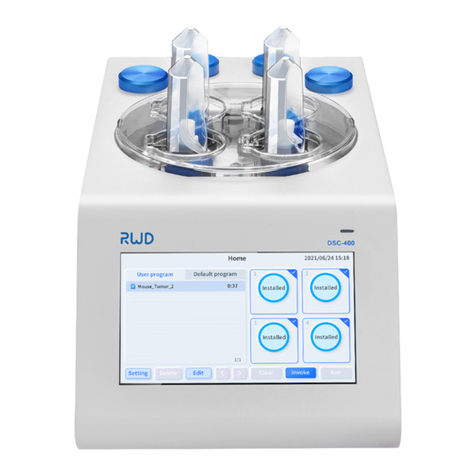
RWD
RWD DSC-400 user manual
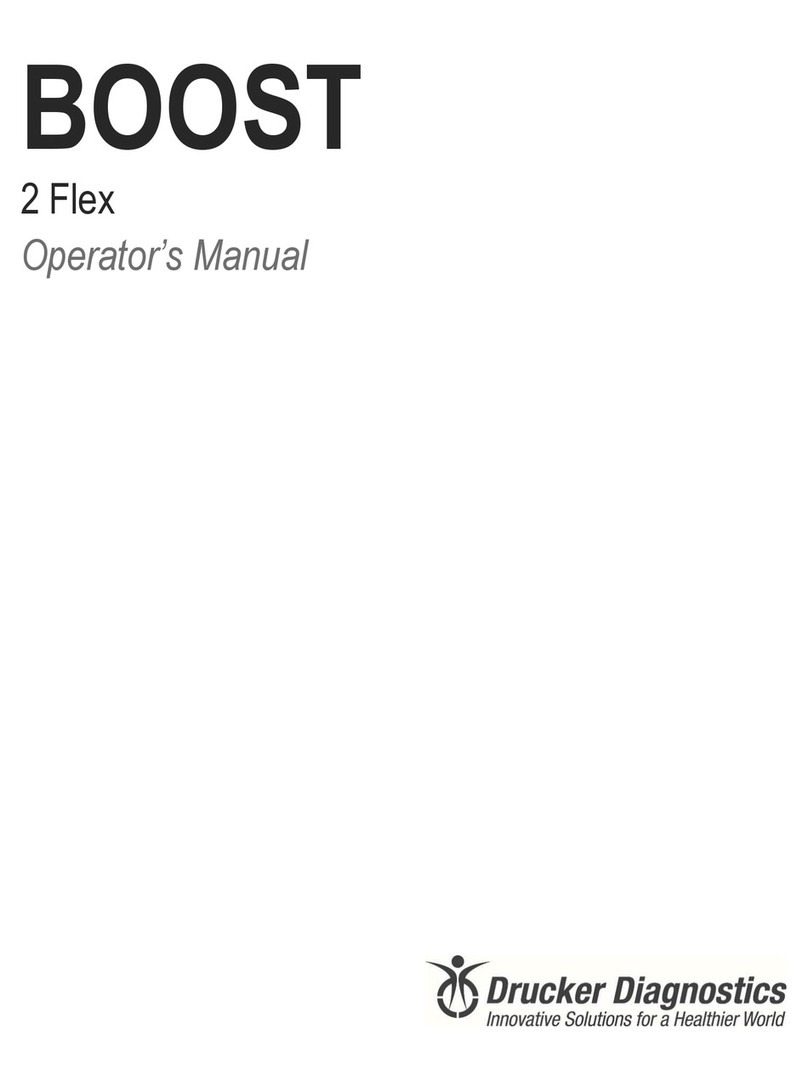
Drucker Diagnostics
Drucker Diagnostics BOOST 2 Flex Operator's manual
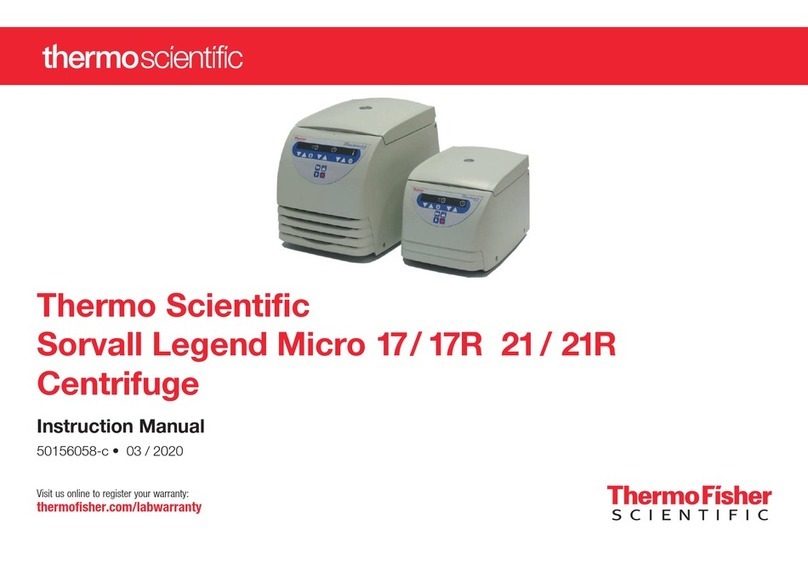
Thermo Scientific
Thermo Scientific Thermo Scientific Sorvall Legend Micro 17 instruction manual
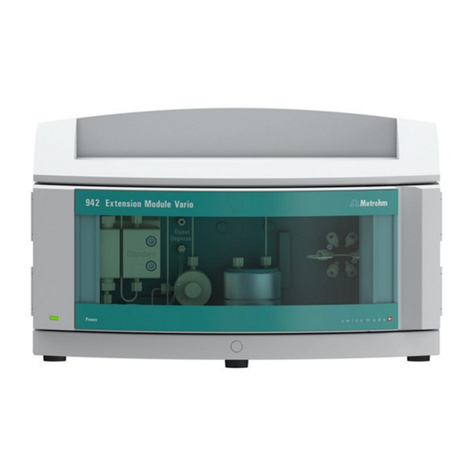
Metrohm
Metrohm 942 Extension Module Vario ONE/Deg manual

Selecta
Selecta MICRO 8 manual



